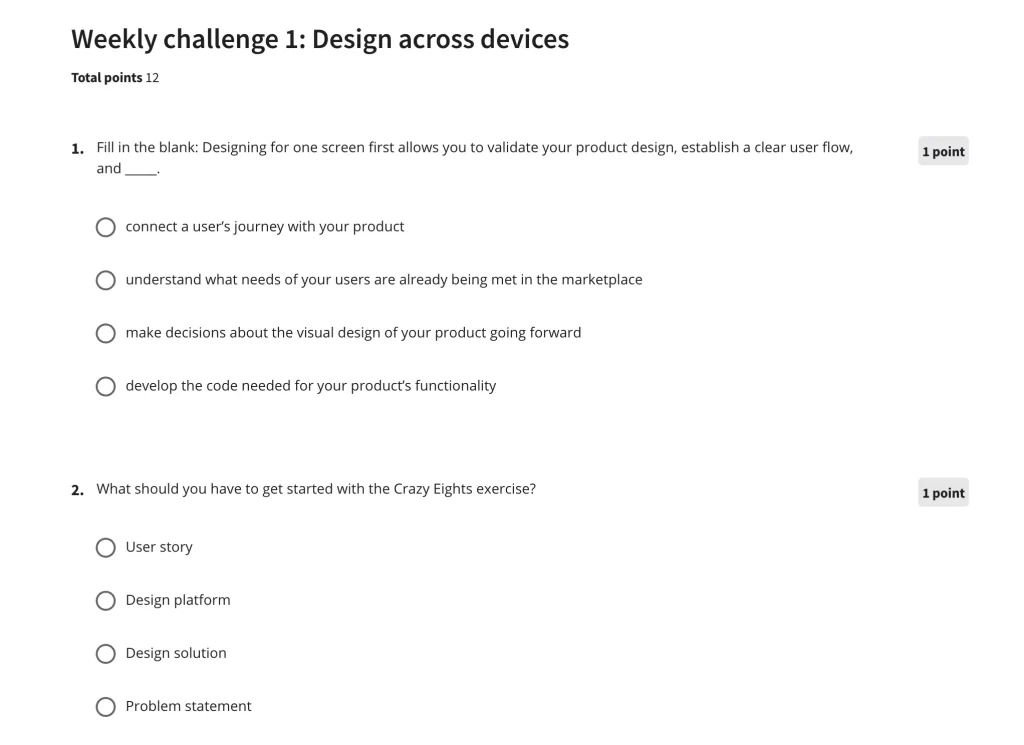Getting a Google certification is a great starting point for a career as a User Experience (UX) Designer.
In this review, I’ll share my experience with the course — what it covers, the skills you’ll gain, and whether it truly prepares you to step into a UX design role.
About This Certificate
The Google UX Design Professional Certificate will help you build the skills to get an entry-level UX design job without prior experience. The program, developed by Google Design Engineers and offered by Coursera, will help you gain the skills needed to succeed in this field.
The course covers everything from research and strategy to design thinking and prototyping. By the end of this course, you’ll know how to create effective user interfaces and designs that meet the needs of your users.
It also includes a section on using AI in UX design. AI technology makes certain tasks like creating personas and writing copy easier and faster.
This Google Career Certificate is suitable for anyone wishing to start a web design career without prior experience. Upon completing the course, you can work as a User Experience designer, web designer, mobile app designer, and product designer.
Is It Worth It?
The Google UX Design Certificate is definitely worth it. For starters, it’s a low-cost certification that you can get for less than $300. It’s an accredited program you can do online from home to prepare you for entry-level UX design jobs.
UX design jobs are in high demand, and the average salary (in the US) is $58,600 annually.
In addition, it’s a practical Google Certification that will help you build the skills needed to work with popular design tools like Figma and Adobe.
The certificate was recently updated to include hands-on activities to help you use AI in UX design. You'll learn to use AI to iterate on design ideas and generate compelling copy for your portfolio website.
So, if you like working as a UX designer, web developer, or graphic designer, this certification is a great starting point.
What You’ll Learn?
The Google UX Design Professional Certificate covers various design-related topics, from creating wireframes and prototypes to conducting interviews and usability studies.
The following are some of the key areas you'll learn about:
- How to understand your users and their needs
- Ideation and brainstorming techniques
- Prototyping tools and methods
- Design principles and how to use them
- User interface design best practices
- How to use AI to generate design ideas and write compelling copy
Cost And Duration
The total cost to get the Google UX Design certificate is $294. Coursera offers the course through the Coursera Plus subscription, which costs $49 per month. On average, it takes students 6 months (6 X $49) to complete the course and get certified.
It consists of seven courses you can complete in about six months, studying 10 hours weekly.
You must complete all courses and pass all graded assignments to get certified.
Coursera offers a 7-day free trial to review the course material before committing to a paid plan.
Who Is This Certificate For?
This entry-level certification is aimed at students without prior web design experience.
The certificate starts by explaining what UX design is and how it works. It includes many examples and practical assignments to help you understand each topic in detail.
The most difficult part is not the lessons but the ability to develop creative design solutions to solve people’s problems. In the course, you’ll learn how to do research, usability studies, and prototypes but not how to come up with the right idea.
So, if you’re creative, this course can help you transform your creativity into a mobile or web design. If you feel that you’re not as creative, you’ll have more difficulties finishing this course and making a career as a web designer.
In this case, you can also consider alternatives like a career in digital marketing. Becoming a digital marketer does not require dealing with designs; it’s more about using strategies and techniques to promote a product or brand online.
You can review this post, which explains in detail what it takes to pursue a digital marketing certification and become a professional digital marketer.
Course Contents And Structure
The Google UX design certificate includes seven online courses. Each course includes videos, reading material, and assignments. To successfully finish this program, you must take the courses in the order specified below.
- Foundations of User Experience (UX) Design
- Start the UX Design Process: Empathize, Define, and Ideate
- Build Wireframes and Low-Fidelity Prototypes
- Conduct UX Research and Test Early Concepts
- Create High-Fidelity Designs and Prototypes in Figma
- Responsive Web Design in Adobe XD
- Design a User Experience for Social Good & Prepare for Jobs
Course 1: Foundations of User Experience (UX) Design
The Foundations of User Experience (UX) Design course is the first course to take to become a certified Google UX designer.
The course is delivered by Google UX designers and researchers and includes several hands-on projects and assignments.
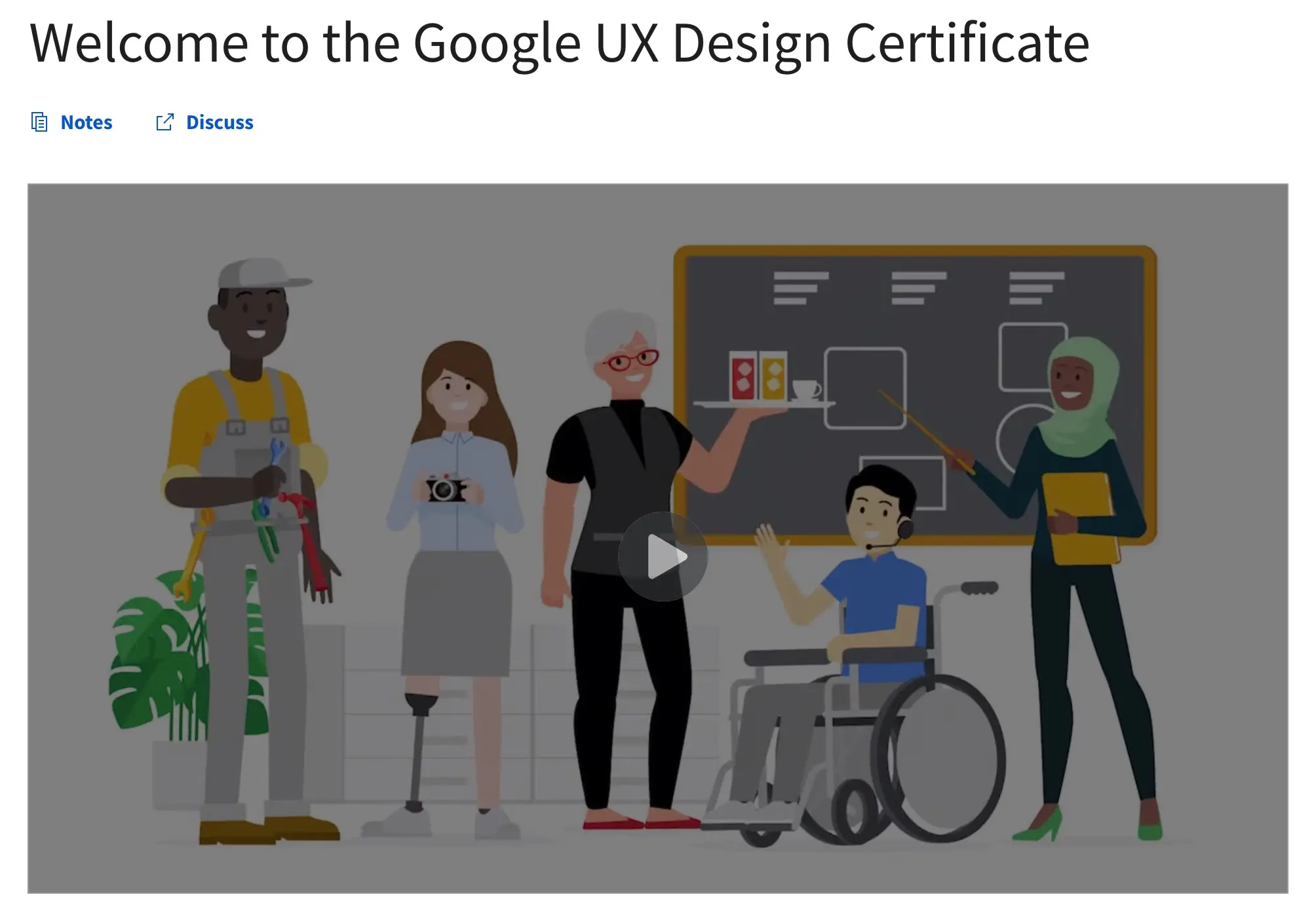
This is an introductory course to UX design, and it will teach you what UX design is and why it’s important for both users and businesses. It summarizes all the concepts you’ll learn in detail in the other 6 courses.
Although the time needed to cover the material of this course is around 8 hours, if you’re a complete beginner, you may need more time to understand some of the basic concepts.
The lessons are split into four weeks, as shown below.
| Topic | Video Time | Reading Time | |
|---|---|---|---|
| Week 1 | Introducing User Experience Design | 1hr | 1hr 55 minutes |
| Week 2 | Getting to know common terms, tools, and frameworks in UX design | 56 minutes | 35 minutes |
| Week 3 | Joining design sprints | 27 minutes | 25 minutes |
| Week 4 | Building a professional presence | 54 minutes | 1hr 20 minutes |
In total, this course includes 4 graded assignments that are multiple-choice questions.
Course 2: Start the UX Design Process: Empathize, Define, and Ideate
The second course to become a Google certified UX designer is the Start the UX Design Process.
The course covers some of the most important concepts designers need to know about understanding user needs and coming up with ideas and solutions to solve their problems.
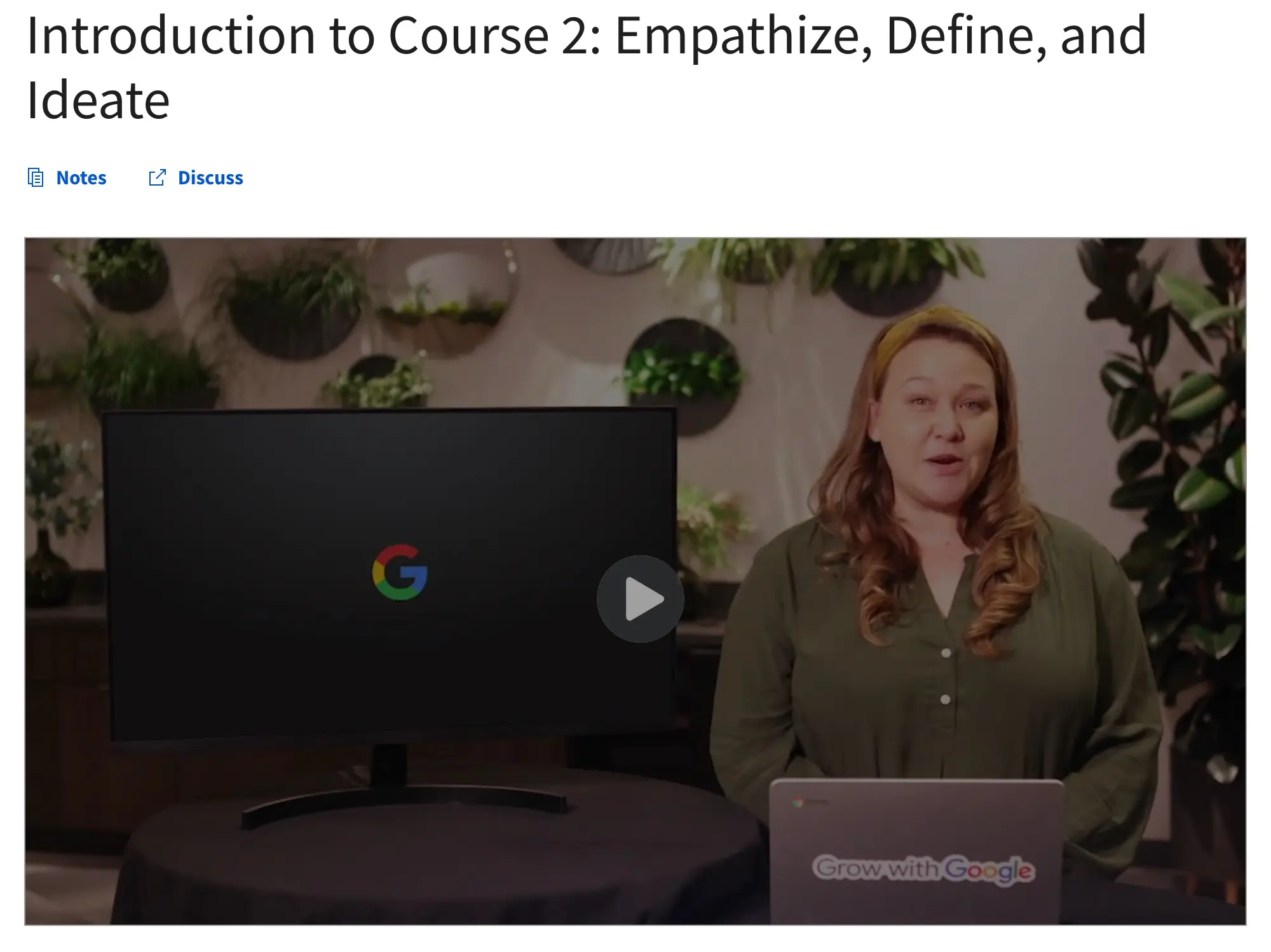
By the end of this course, you’ll know how to perform research using common UX methods and how to generate and present design ideas to users and potential clients.
The material is broken down into five weeks, with a total investment of 9 hours.
| Topic | Video Time | Reading Time | |
|---|---|---|---|
| Week 1 | Integrating research into the design process | 43 minutes | 55 minutes |
| Week 2 | Empathizing with users and defining pain points | 37 minutes | 1hr 45 minutes |
| Week 3 | Creating user stories and user journey maps | 25 minutes | 1hr 5 minutes |
| Week 4 | Defining user problems | 18 minutes | 1hr 5 minutes |
| Week 5 | Ideating design solutions | 40 minutes | 1hr 30 minutes |
To successfully complete this course, you must pass a multiple-choice quiz and submit three assignments (user persona, user journey map, and competitive audit).
As part of the graded work, you’ll have to rate and review other students' work.
Course 3: Build Wireframes and Low-Fidelity Prototypes
The Build Wireframes course is practical and teaches you how to create storyboards and wireframes. You’ll be introduced to the basics of UX design and the Figma design tool.
As part of the coursework, you’ll start building a prototype for a mobile app.
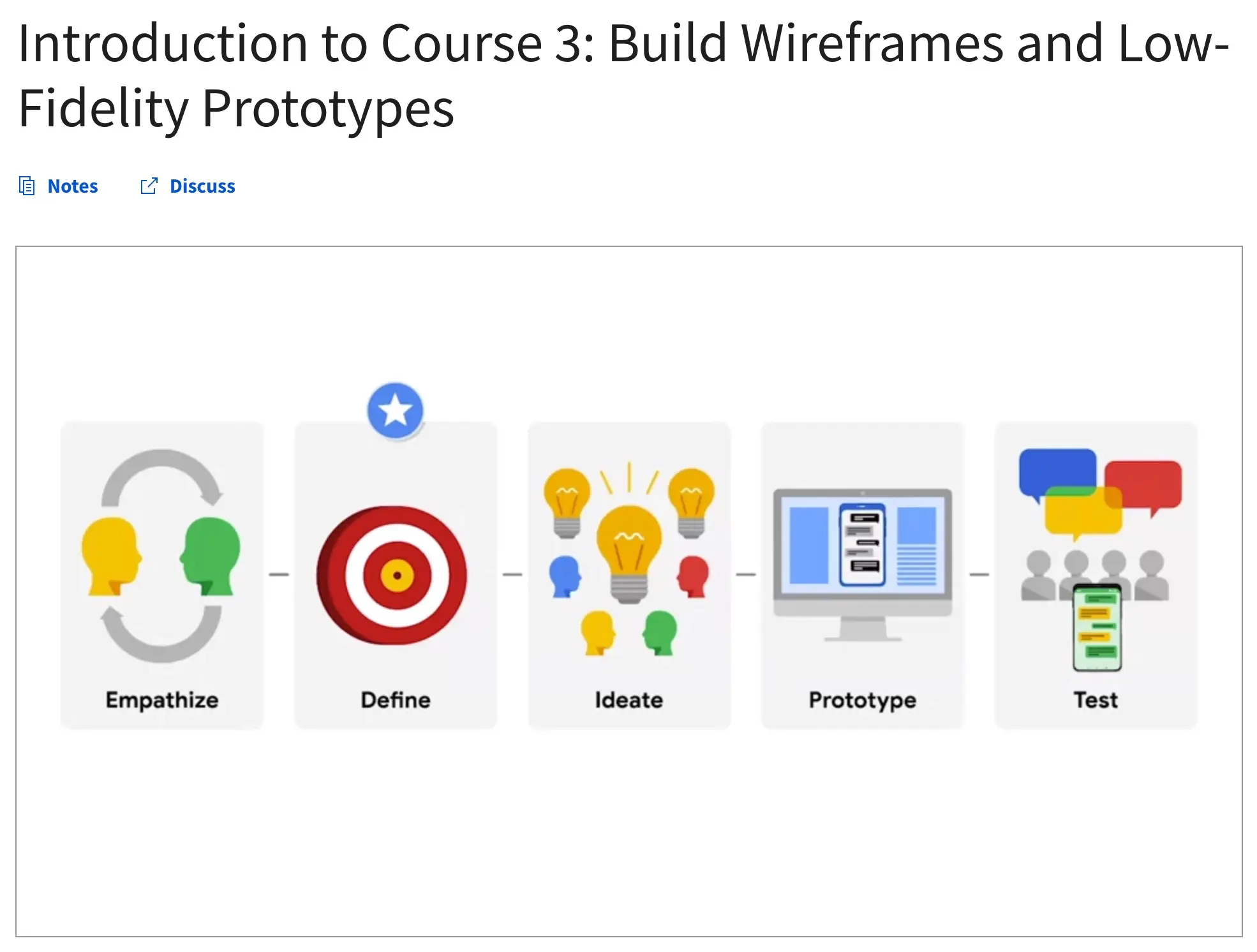
The course material is three weeks long, and the total time investment is 8 hours.
| Topic | Video Time | Reading Time | |
|---|---|---|---|
| Week 1 | Storyboarding and wireframing | 49 minutes | 2hr 5 minutes |
| Week 2 | Creating paper and digital wireframes | 57 minutes | 1hr 5 minutes |
| Week 3 | Building low-fidelity prototypes | 57 minutes | 2hr |
To complete this course, you must submit three assignments (Create storyboards and digital wireframes for your portfolio project and build a low-fidelity prototype).
Course 4: Conduct UX Research and Test Early Concepts
In this Conduct UX Research course, you will learn how to plan and conduct a usability study to get feedback from potential users about your designs.
You'll then learn how to modify those low-fidelity prototypes based on insights gained through research.
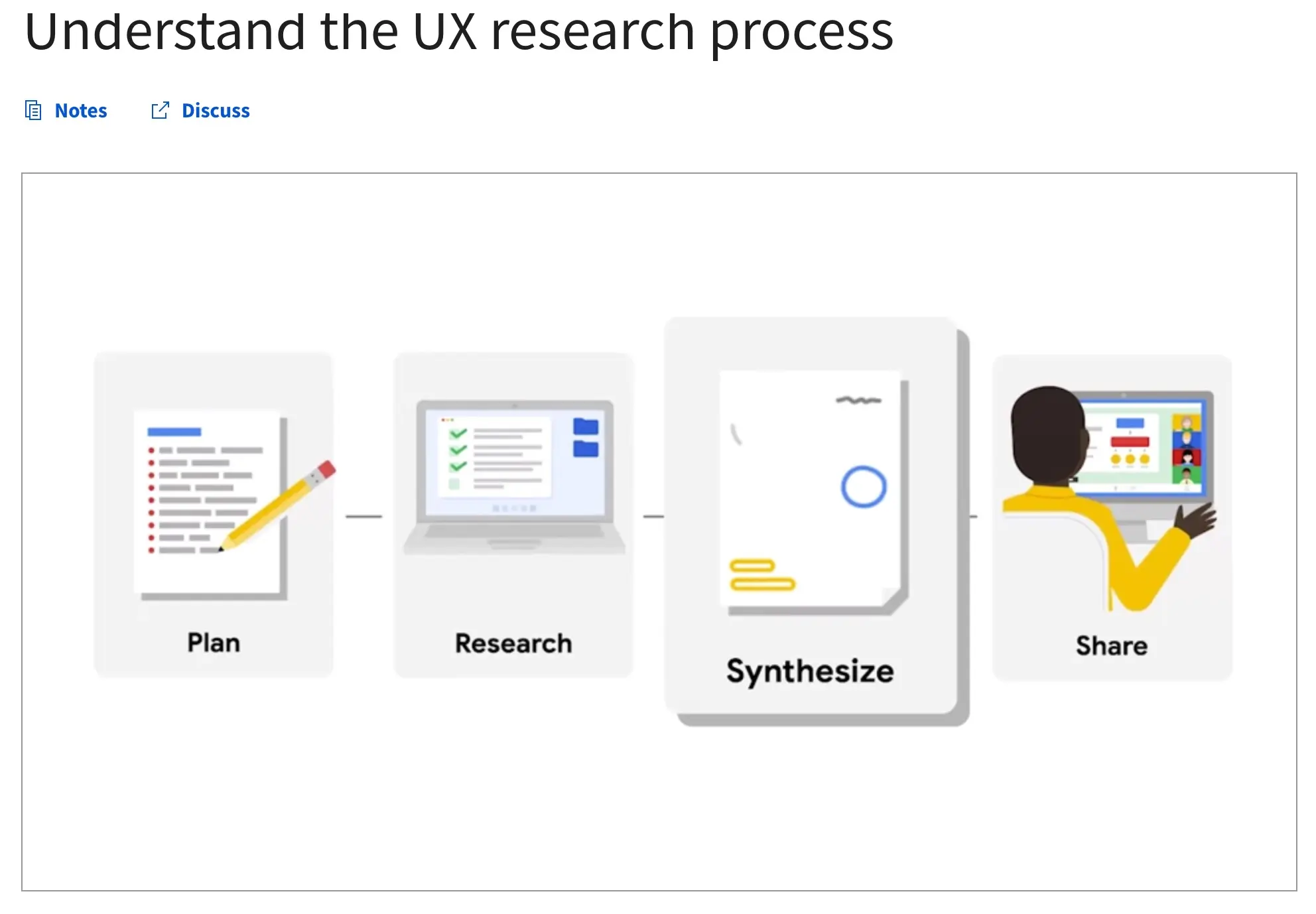
By the end of this course, you'll know how to perform a full UX research study, conduct a usability study, and present your findings to users.
The course material is divided into four weeks, and the total time investment is around 9 hours.
| Topic | Video Time | Reading Time | |
|---|---|---|---|
| Week 1 | Planning UX research studies | 58 minutes | 2hr 20 minutes |
| Week 2 | Conducting research with usability studies | 1hr 8 minutes | 1hr 15 minutes |
| Week 3 | Analyzing and synthesizing research results | 23 minutes | 45 minutes |
| Week 4 | Sharing research insights for better designs | 30 minutes | 1hr |
This course has four graded assignments related to research, usability, and reviewing the work of other students.
Course 5: Create High-Fidelity Designs and Prototypes in Figma
The Create High-Fidelity Designs and Prototypes in Figma course will teach you how to create mockups in Figma and transform them into interactive prototypes that users can test.
It’s a highly practical course and one of the most interesting courses in the UX design certification.
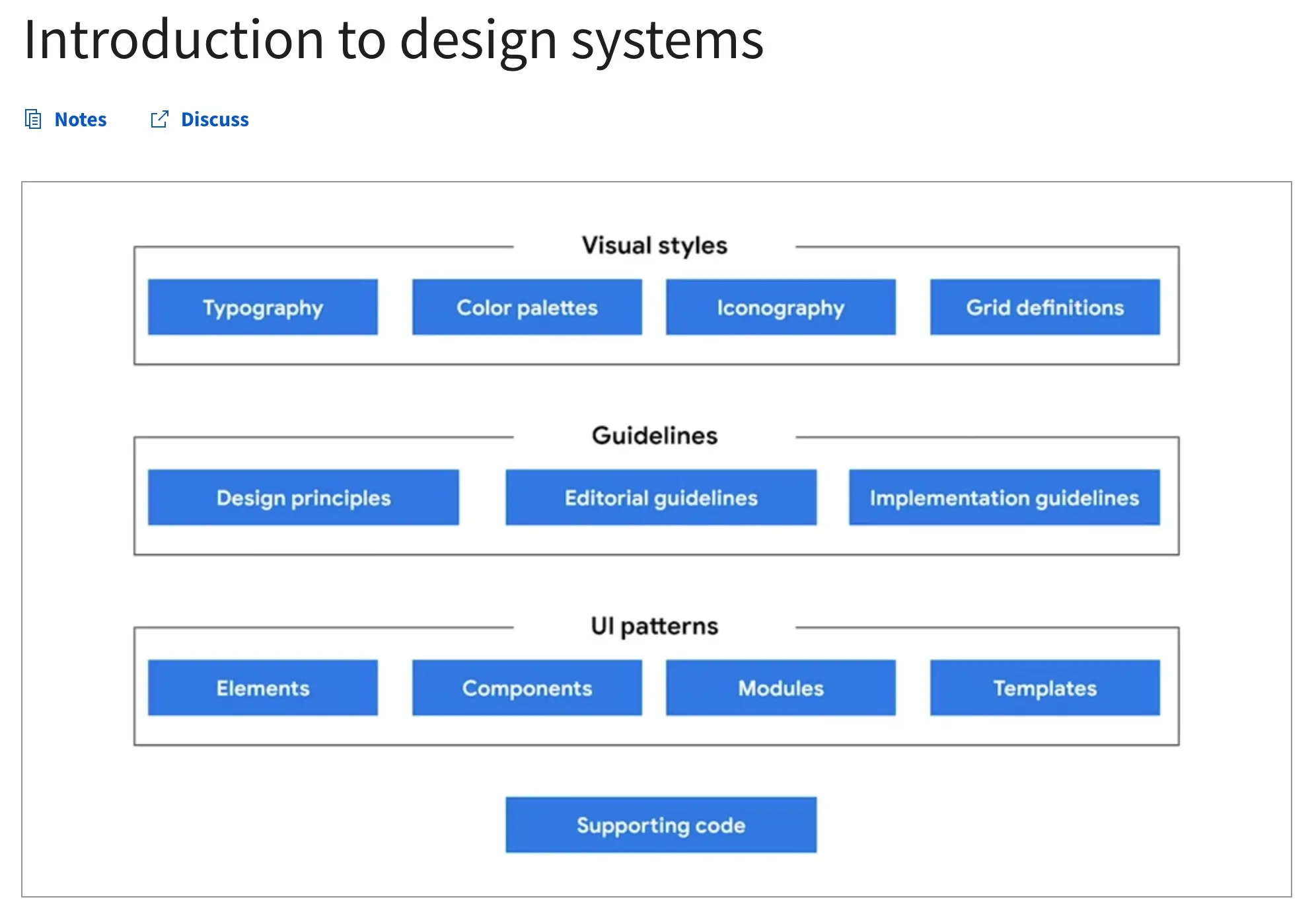
It will take around 15 hours to go through the material, divided into six weeks.
| Topic | Video Time | Reading Time | |
|---|---|---|---|
| Week 1 | Starting to create mockups | 52 minutes | 3hr 50 minutes |
| Week 2 | Applying visual design principles to mockups | 28 minutes | 1hr 45 minutes |
| Week 3 | Exploring design systems | 33 minutes | 45 minutes |
| Week 4 | Participating in design critique sessions | 35 minutes | 15 minutes |
| Week 5 | Creating high-fidelity prototypes | 32 minutes | 35 minutes |
| Week 6 | Testing and iterating on designs | 40 minutes | 1hr 50 minutes |
The exams include both quizzes and assignments.
Course 6: Responsive Web Design in Adobe XD
The sixth course you must complete is Responsive Website Design in Adobe XD. It will teach you how to design a complete responsive website in Adobe XD.
You must have successfully finished all five previous courses to take this course.
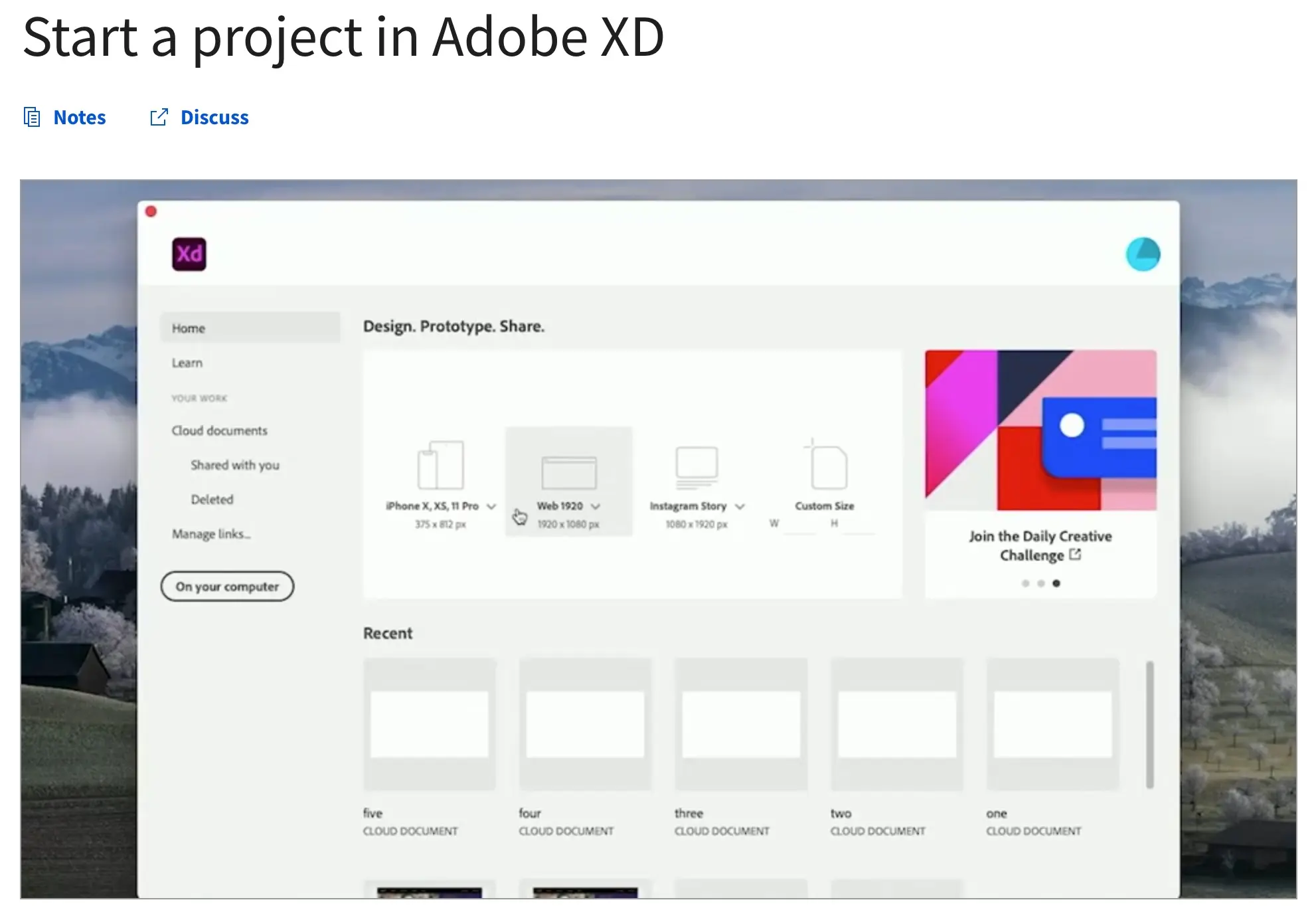
In addition to creating a design from scratch, you'll also learn how to find entry-level design jobs and how to start building your UX resume.
The total time investment needed to complete this six-week course is 16 hours.
| Topic | Video Time | Reading Time | |
|---|---|---|---|
| Week 1 | Starting the UX design process: Empathize and define | 38 minutes | 2hr 25 minutes |
| Week 2 | Continuing the UX design process: Ideate | 30 minutes | 1hr 15 minutes |
| Week 3 | Creating wireframes for a responsive website | 53 minutes | 2hr 5 minutes |
| Week 4 | Creating and testing low-fidelity prototypes | 28 minutes | 1hr 55 minutes |
| Week 5 | Creating and testing high-fidelity designs | 47 minutes | 2hr 25 minutes |
| Week 6 | Documenting design work and searching for jobs | 50 minutes | 1hr 30 minutes |
The exams for this course include tasks for creating a website from scratch.
Course 7: Design a User Experience for Social Good & Prepare for Jobs
This is the last course in the series. It's basically a recap of what you've learned during the UX certificate program. You'll have to design a mobile app, and website focused on social good using all the concepts discussed in the previous six courses.
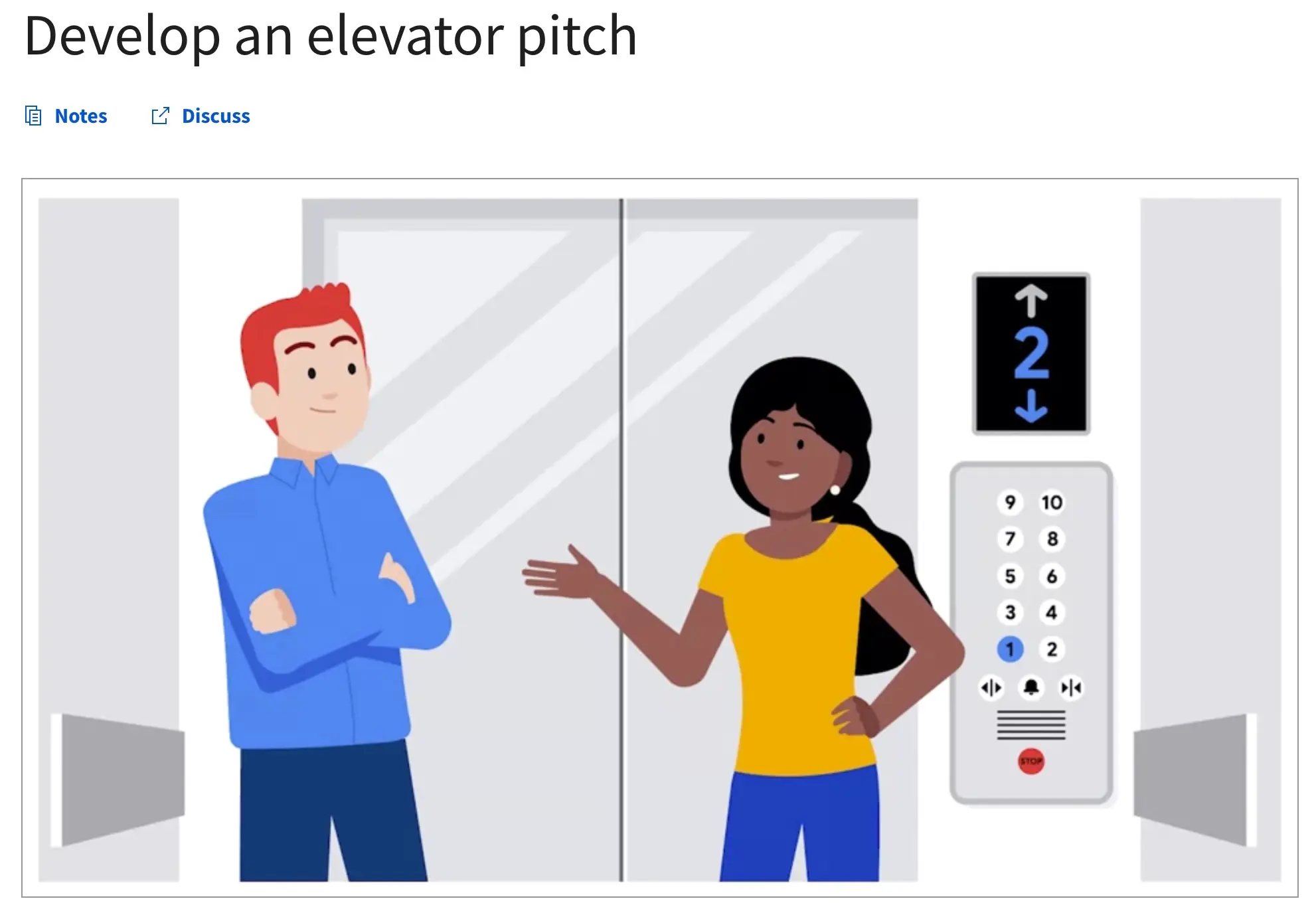
Upon completing this course, you'll have a new cross-platform design project to include in your professional UX portfolio.
The course includes 5 assignments, and the time investment required to complete the lessons is approximately 20 hours.
| Topic | Video Time | Reading Time | |
|---|---|---|---|
| Week 1 | Starting the UX design process: empathize, define, ideate | 56 minutes | 3hr 5 minutes |
| Week 2 | Creating wireframes and low-fidelity prototypes | 24 minutes | 2hr 15 minutes |
| Week 3 | Creating mockups and high-fidelity prototypes | 15 minutes | 1hr 15 minutes |
| Week 4 | Designing a complimentary responsive website | 36 minutes | 2hr 15 minutes |
| Week 5 | Finding a UX job | 1hr 19 minutes | 3hr 35 minutes |
Sample Exam Questions
To become a Google UX Designer, you must complete all seven courses and pass all exams successfully.
There is no final exam for this certificate, but several graded assignments for each course.
Some of the assignments are multiple-choice quizzes, but most are written assignments and different types of designs (wireframes, prototypes, mockups, etc.).
You’ll also have to review and mark other students’ assignments as part of the graded work.
You can submit all work online without having to attend any classroom-based exams.
You can see below some samples of what the exam questions look like:
Other Google Career Certifications
The Google UX Design Certificate is among the nine Google Career programs offered. You can read our detailed reviews of the other certificates below.
- Google IT Support Professional Certificate Review
- Google IT Automation Professional Certificate Review
- Google Data Analytics Professional Certificate Review
- Google Project Management Professional Certificate Review
- Google Digital Marketing and eCommerce Certificate Review



